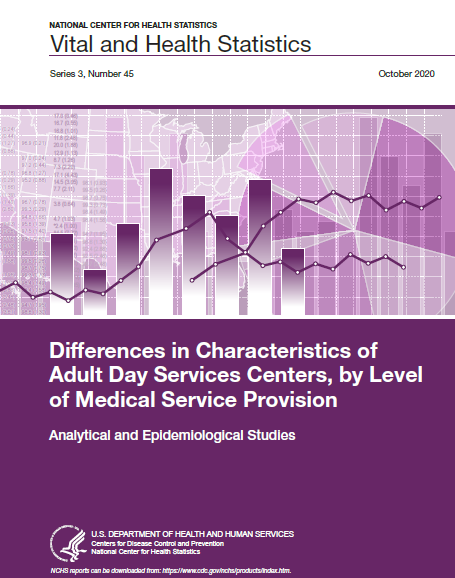Differences in Characteristics of Adult Day Services Centers, by Level of Medical Service Provision
Posted on by A new NCHS report provides estimates of the most current nationally representative distribution of adult day services centers (ADSCs) and participants by level of the center’s medical service provision. It also examines differences in organizational characteristics, participant characteristics, and geographical characteristics of ADSCs by medical service provision.
A new NCHS report provides estimates of the most current nationally representative distribution of adult day services centers (ADSCs) and participants by level of the center’s medical service provision. It also examines differences in organizational characteristics, participant characteristics, and geographical characteristics of ADSCs by medical service provision.
Findings:
- In 2016, 16.1% of ADSCs were nonmedical, 30.6% were low medical, 39.7% were moderate medical, and 13.5% were high medical.
- Daily attendance, Medicaid licensure, nurse staffing levels, use of electronic health records and any health information exchange with physicians, pharmacies, and hospitals all increased with increasing level of medical service provision.
- Among participants, there was a significant increase by increasing level of medical service provision in the percentage of participants who were Hispanic and non-Hispanic races other than white or black, aged 65 and over, diagnosed with selected conditions, needed assistance with any activities of daily living, lived in a private residence alone, had Medicaid, and had any adverse events.
- The percentage of centers located in metropolitan statistical areas and those located in the Northeast and South census regions increased with increasing level of medical service provision.
Posted on by
Page last reviewed: October 23, 2020
Page last updated: October 23, 2020
Content source:
CDC, National Center for Health Statistics

